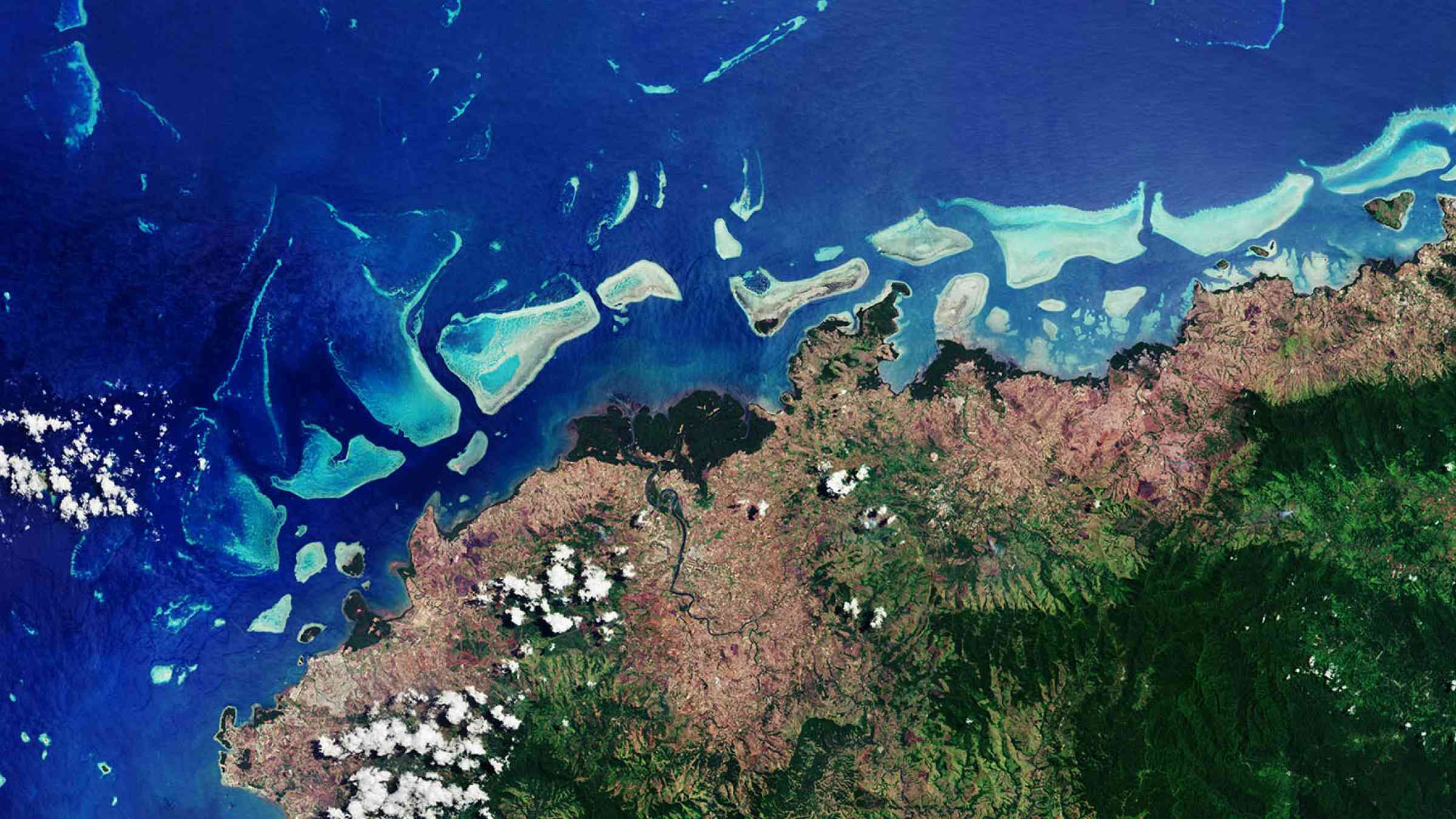These natural barriers can weaken a tsunami

Nothing manmade stops a major tsunami. The seawall at the Fukushima nuclear power facility in Japan was 19 feet (5.8 m) high, which proved no match for the forty-foot (12 m) wave that came ashore in 2011 from the Tohoku earthquake. The wall then prevented waters from quickly receding, prolonging the flood. Are natural barriers the answer?
In a word, maybe. A wave of the magnitude of the Tohoku tsunami will decimate all before it. However, natural barriers have proven effective in absorbing a tsunami’s power, in effect slowing it down, and in the process reducing the overall height. Perhaps the seawall will still be breached, but the floodwaters won’t travel as fast or as far. So what are these natural barriers and how are they effective?
Coral Reefs
Coral reefs buffer shorelines against waves, storms, and floods by their structure. The outermost seaward slope extends from the low-tide mark into deep water. Just below the low-tide mark to approximately 20 m depth is a zone of buttresses radiating out from the reef. The buttress zone serves two main purposes. First, it acts to disperse the tremendous force of waves and stabilizes the reef. Second, the channels between the buttresses drain debris and sediment off the reef and into deeper water.
Force is dissipated by friction as water passes across the coral’s rough surface. However, research has shown that this is truer of live coral. Dead coral is worn too smooth over time, decreasing its friction capacity.
Sand Dunes
Sand dune complexes are the last line of defense. Like coral reefs, they diminish the tsunami’s strength, thus the higher the dunes and the wider the beaches, the more energy is absorbed. Of course, the sand dune complexes are often destroyed by cataclysmic tsunamis, but their power absorption beforehand will lessen the initial impact.
Mangroves
Wide areas of mangroves can reduce tsunami heights, helping to reduce loss of life and damage to property in areas farther ashore. Thick trunks and tangled branches slow down waves, and their extensive root structure helps stem erosion.
Their effectiveness, however, depends on their number. Mangrove belts several hundred meters wide have been shown to reduce tsunami height by between 5% and 30%. And an extensive mangrove forest can lower the resulting flood water depth anywhere from 5% to 30%.
It is despairing to note an estimated 35% of the world’s mangrove forests have been destroyed since 1980. That’s bad news if we want to limit the effect of tsunamis in future. The simple fact that dense mangrove clusters are uninhabitable also keeps humans further away from the shoreline, where the danger is greatest.
A Caution
Barrier islands by their very name would seem a natural addition to this list. However, that would be a mistake. And it is a mistake made by too many people who falsely believe in their protection and build shore communities on their leeward side. Post-tsunami analyses, both on the ground and in computer modelling, have shown barrier islands in fact magnify a wave’s energy, creating greater height and thus a stronger force directly in the path of these communities. So ‘barrier’ in this case is a dangerous misnomer.